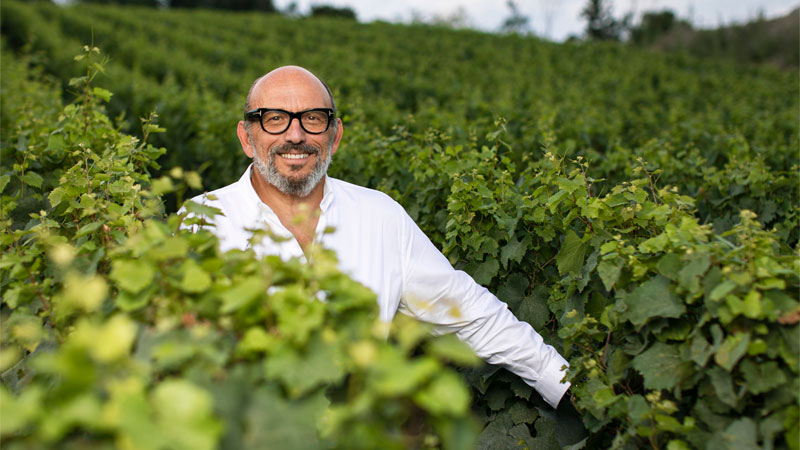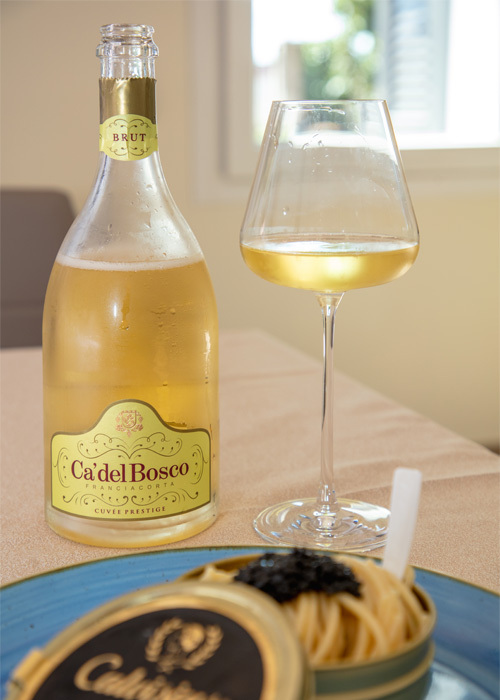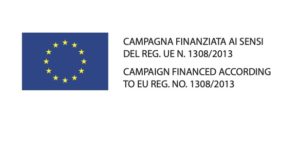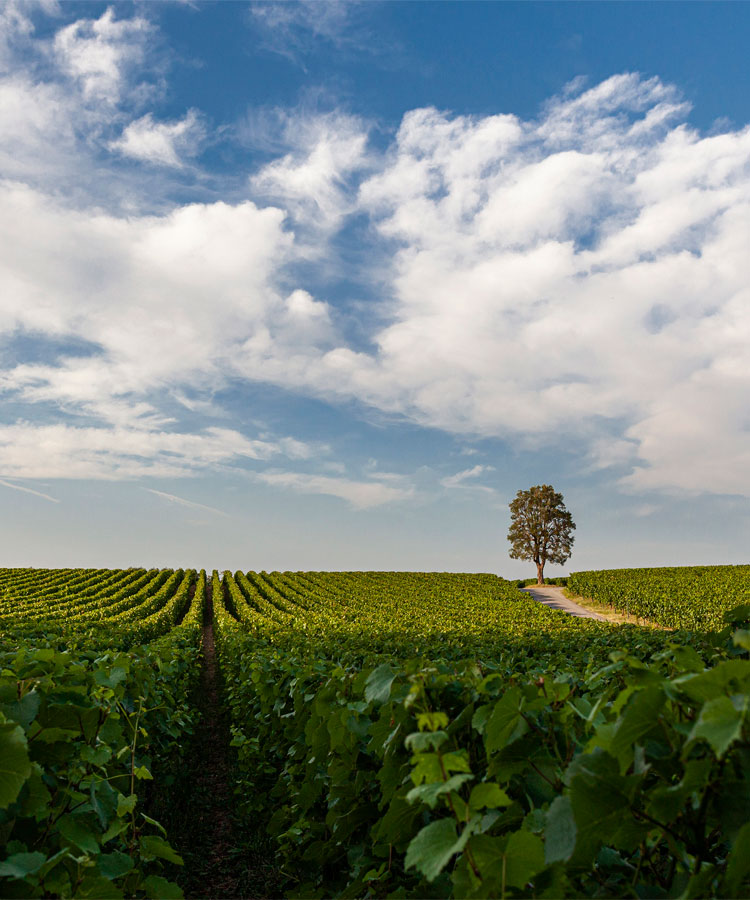
What is Metodo Ca’ del Bosco? It’s a luxurious Italian escape without leaving your front door.
The holidays are here, and for most, this year’s festivities may look or feel different. But no matter how you choose to celebrate, you can still escape to the Bel Paese (beautiful country) for a moment of joy and celebration. The legendary winery of Ca’ del Bosco — the jewel of the iconic DOCG Franciacorta region in northern Italy—offers an unparalleled selection, their purity of fruit and effervescent mouthfeel enhancing any toast.
Located in Italy’s Lombardy area, just south of Lake Iseo, the “little farm in Erbusco” once known as Ca’ del bosc grew from humble beginnings to become one of Italy’s most iconic and highly prized brands. Purchased in 1964 by Annamaria Clementi Zanella as a family weekend retreat from Milan, it was later transformed into a world-class winery by Zanella’s son, Maurizio. In his teens, he traveled to France to learn about winemaking and returned with a mission. “I wanted to start something, to prove that Italy could create a sparkling label of quality,” he asserts, explaining that the first planting began in 1968, with the initial harvest and bottling in 1972. “Fifty years, it’s not a long time for quality wine, but it is long enough for a dream to become a reality.” Since the creation of the winery, Zanella has strived to guarantee that the label “Franciacorta” would someday signify a specific regional sparkling wine, rather than be classified as “methode champenoise” or “spumante,” and in 1995, he succeeded, with Franciacorta officially named a DOCG. To date, Ca’ del Bosco’s wines have earned 44 “Tre Bicchieri” awards by Italy’s Gambero Rosso — the second-highest awarded winery — and in 2019 won the London Champagne & Sparkling Wine World Championships’ “Best Italian Sparkling Wine” title with the magnum Franciacorta Annamaria Clementi 2009.
At over 245 hectares, Ca’ del Bosco’s network of local vineyards overflow with Chardonnay, Pinot Nero, Pinot Bianco, Cabernet Sauvignon, Cabernet Franc, and other indigenous grapes. The vines benefit from the region’s lower latitude, cold breezes that roll off the Dolomites, and proximity to the Mediterranean. The area’s mineral-rich terroir gives the fruit its distinct acidity and subtle palate. Once harvested, the grapes are individually sorted and are washed using the “berry spa,” a unique piece of equipment that Ca’ del Bosco has created to ensure only the purest grapes make it into the wines. Ca’ del Bosco will then blend five to six vintages into each bottle to maintain consistency and style.

Cuvée Prestige Extra Brut reigns supreme with a brilliant gold color, and a complex and bold flavor with aromas of apple, stone fruit, and linden, along with green tea notes. The fruit’s purity is enhanced by the use of Chardonnay, Pinot Nero, and Pinot Bianco grapes vinified separately and blended with reserves of prized vintages. The wines, which, per Ca’ del Bosco winery guidelines, require a minimum of 24 months of refinement on yeasts before fully expressing richness and identity, are nuanced and fresh, the ripe fruit aroma and crisp taste pairing well with poultry, pastas, and light cheeses.
“There’s a richness in texture unlike other sparkling wines that are chiseled and have a more angular focus,” Says Joon Lim, head sommelier at the Cherokee Town & Country Club in Buckhead, Atlanta and Atlanta’s Best Sommelier 2011. “The wine is a great apéritif, but pliable when matched with foods, adapting to a wide range of flavors.” Lim often recommends the Cuvée Prestige, noting how its layers play upon a dish’s primary flavors. “It is texturally unique in the lineup of sparkling wines we offer, its broad and creamy composition bringing a textural match to the subtle-sweet richness of butternut squash soups,” he says, noting it also pairs well with fish — particularly a well-marbled salmon, Toro tuna, or raw fresh shucked oysters. “The pliability of the Cuvée Prestige brings a sense of balance to the saline notes and oceanic flavors of the oysters.” He also extols the purity of its fruit as “the utmost direct and honest expression of any wine that doesn’t need heavy dosage, oak, extraction, or any other type of intervention,” whether in the cellar or the vineyard. “Texture and purity of fruit are the two pillars that bring a harmonic interaction between the food and the wine, respecting each other’s intricacies and subtleties,” he says.
At a recent online wine tasting for Buone Feste, a taste of the Italian Holidays, Chef Stefano Cerveni, founder of the Michelin Star restaurant Due Colombe, paired Ca’ del Bosco’s Cuvée Prestige Extra Brut and Vintage Collection Dosage Zéro with his famous Lussuria, a sumptuous hors d’oeuvre of mascarpone cheese, chives, and lemon over potato, crowned with a dollop of Calvisius’s Oscietra caviar. The chef noted that the “delicate flavor” of the caviar was enhanced, not overpowered, by the crisp dryness of the wines —which provided an ideal palate complement for the luxurious treat. He explained that the dish, though decadent, is an easy-to-replicate party pairing for the Cuvée Prestige, and can also be substituted for your favorite caviar brand or the celebratory dish of your choosing.

Jennifer Schmitt, an Advanced Sommelier who works as head sommelier for Zuma Miami, has poured Cuvée Prestige by the glass for over two years. “The Cuvée Prestige is crisp and lively,” she says, noting it is brilliant with shaved Brussels sprout salad with lardons, smoked Gouda, and creamy lemon vinaigrette. “You will never find a heavy or oxidative style with Ca’ del Bosco,” she explains, elaborating that “each varietal stands as a building block to achieve the elegance and refinement flavor profile they are targeting.”
Schmitt believes that Ca’ del Bosco’s focus on low dosage allows fruit purity to shine through, even with the refinement of extended lees aging. “The lees aging develops a mousse texture of small bubbles and builds complexity of aroma,” she says. “However, I have never found it to dominate the excitement of the fruit. The racy acidity is key to matching with citrus or tomato-based dishes — think of it as the squeeze of lemon on a finished dish.” With the extended lees aging of the 2015 Vintage Collection Dosage Zéro, says Schmitt, Ca’ del Bosco achieves a blend that begs to be paired with a salty treat, “so make sure to bring a little creme fraiche and chives to the party to see how food and wine enjoyed together will explode in your mouth.”
“The Cuvée Prestige is so flexible. A wine you will want to make your own personal house bubbles,” says Schmitt. “It will just put a smile on your face.” And as 2020 comes to a close, we could all use a little more smiles and bubbles this holiday season.
This article is sponsored by Ca’ del Bosco.

